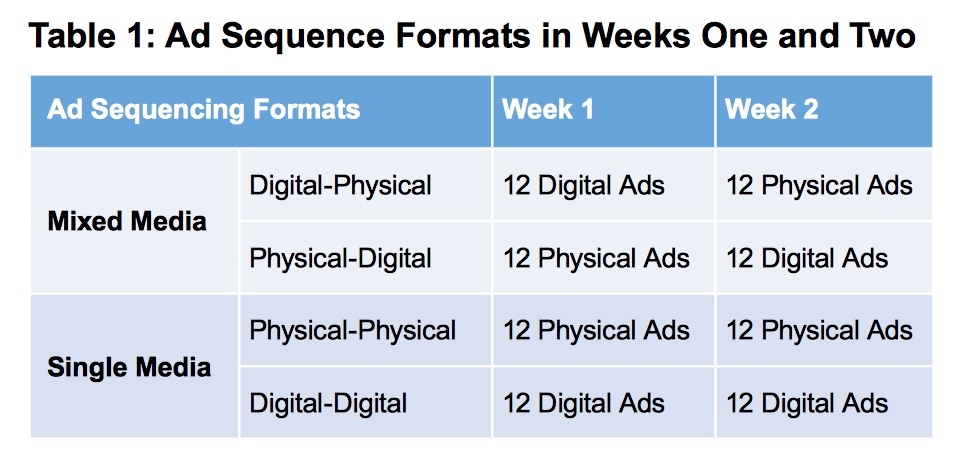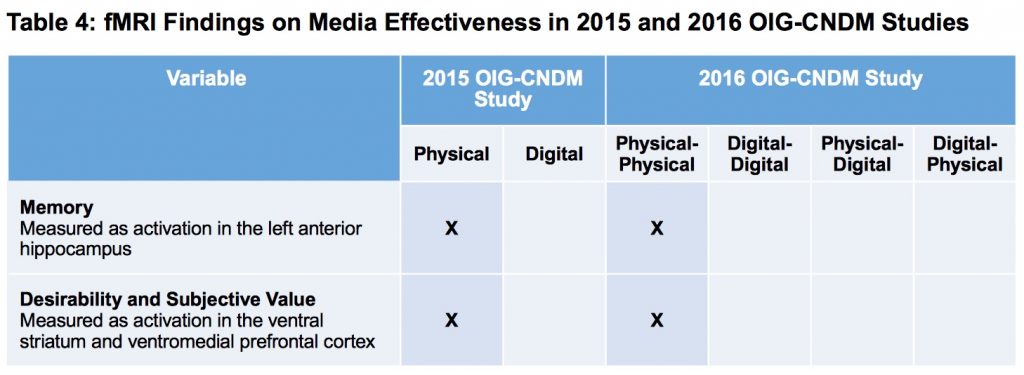It’s the holy grail for any ad – to create a memory in the viewer, to spark a desire, and to create a higher perceived value for what you are selling.
And according to a neuromarketing study, physical ads shown at least twice are the best way to get there.
The work was part of a USPS study done in collaboration with Temple University’s Center for Neural Decision Making called “Tuned In: The Brain’s Response to Ad Sequencing.” It aimed to answer which sequence of ads is most effective.
“With more advertising channels available now than ever before and limited consumer attention spans, marketers must understand not only which channel is most effective, but if the sequence of their advertisements (ads) make a difference,” notes the report intro. “For example, if a consumer first receives an ad in the mail and later sees the same ad via email, did the order in which she viewed the ads influence the ads’ effectiveness? Would a reversed, digital-physical media sequence have resonated more powerfully with her? How about if she had seen two advertising mailpieces instead?”
Participants attended three sessions, each about a week apart, and viewed ads in a variety of combinations, while their brain responses were being monitored via fMRI technology.

Image source: USPS
According to the report, “The fMRI data indicated the highest activation of the left anterior hippocampus for ads in the physical-physical sequence. This area of the brain is associated with creating memories, meaning the physical-physical sequence was more effective at creating memories than the other sequences.”
The print-print sequence was also found to be most effective at sparking desire and increasing perceived value.

Image source: USPS
For advertisers, information like this is critical to helping them make effective marketing decisions. Rather than relying on an “everyone’s doing it” approach to buying ads, this kind of research helps us make smarter, more cost-effective pitches for potential advertisers.
I think that sometimes, in the midst of so much industry disruption, it can be easy to overlook the very important fact that print ads are great at selling. This is the message that your ad partners need to hear.
